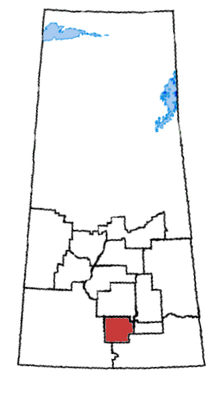 Palliser in relation to other Saskatchewan federal electoral districts | |
| Coordinates: | 50°10′59″N105°17′13″W / 50.183°N 105.287°W |
| Defunct federal electoral district | |
| Legislature | House of Commons |
| District created | 1996 |
| District abolished | 2013 |
| First contested | 1997 |
| Last contested | 2011 |
| District webpage | profile, map |
| Demographics | |
| Population (2011) [1] | 68,544 |
| Electors (2011) | 50,094 |
| Area (km²) [2] | 7,486.76 |
| Census subdivision(s) | Regina, Moose Jaw |
Palliser was a federal electoral district in Saskatchewan, Canada, that was represented in the House of Commons of Canada from 1997 to 2015. It was named in honour of John Palliser, a geographer and explorer of the Canadian West.